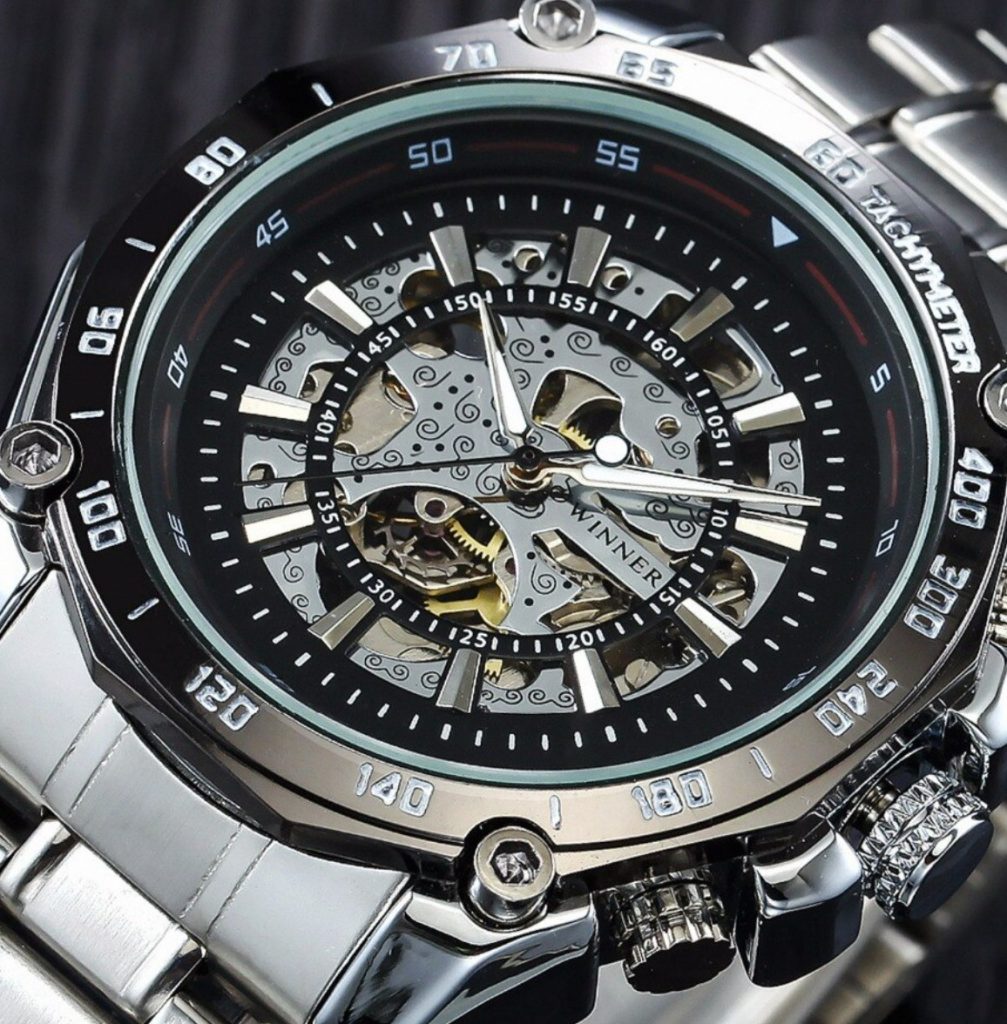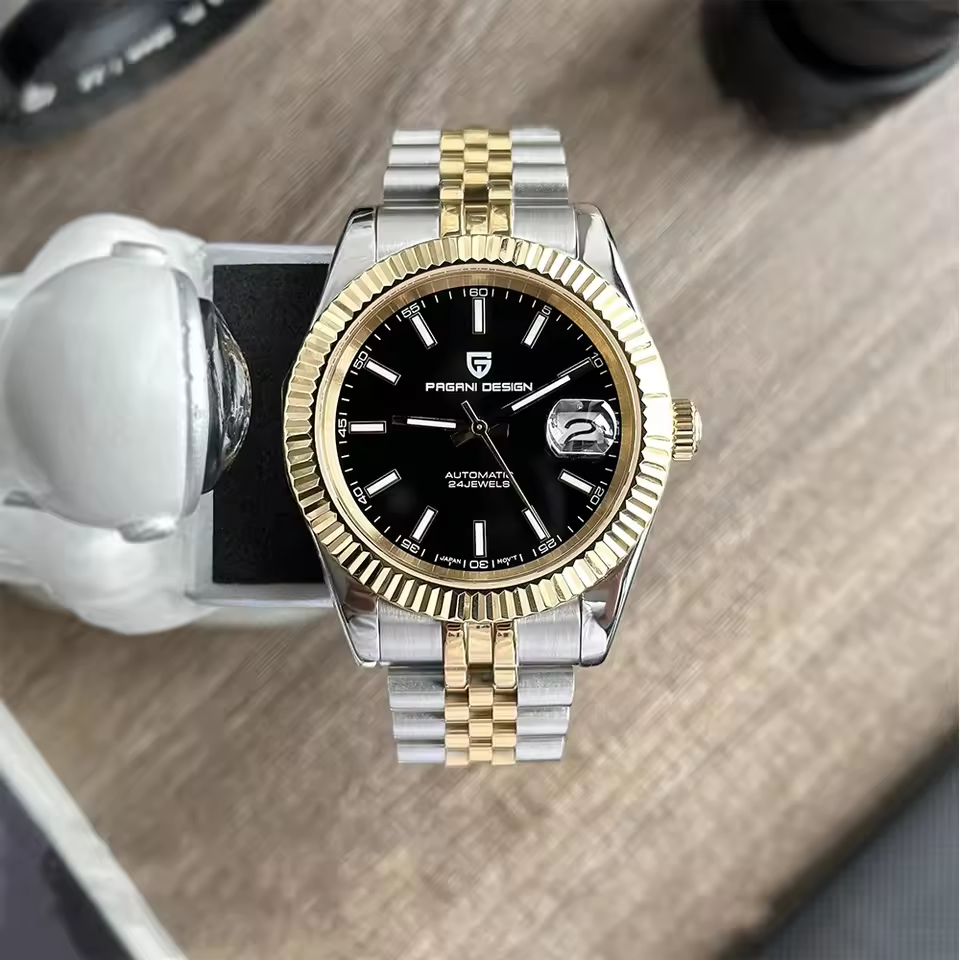In a world dominated by digital displays, mechanical watches endure as captivating testaments to human ingenuity. These intricate marvels transcend mere timekeeping, transforming into miniature symphonies of gears, springs, and meticulous craftsmanship. This article delves into the timeless appeal of mechanical watches, exploring their rich history, the intricacies of their mechanics, and the reasons why they continue to hold a special place in our hearts.

Part 1: A Journey Through Time: The Enduring Legacy of Mechanical Watches
1. From Portable Sundials to Wrist Art: The Evolution of Timekeeping
The origins of mechanical watches can be traced back to 16th century Europe. Early timepieces were large, spring-powered devices worn around the neck or carried in pockets. Over centuries, advancements in miniaturization led to the development of portable watches and eventually wristwatches in the late 19th century. This coincided with the rise of active lifestyles, making wristwatches a practical and stylish timekeeping accessory.
2. Beyond Functionality: The Birth of Haute Horlogerie
As watchmaking techniques evolved, mechanical watches transcended their functional purpose. Artisans began incorporating intricate complications like moon phases and perpetual calendars, elevating timepieces into exquisite works of art. This dedication to precision and artistry gave birth to Haute Horlogerie, the pinnacle of watchmaking that continues to captivate collectors and enthusiasts today.
Part 2: The Heartbeat of the Machine: Unveiling the Mechanics

1. The Powerhouse: The Mainspring and Gear Train
The mainspring serves as the very heart of a mechanical watch. This tightly wound spiral coil stores potential energy. When the crown is wound, the mainspring is compressed, and this stored energy is gradually released, powering the entire watch mechanism. The gear train acts as a meticulous network of interlocking gears, transferring the unwinding energy of the mainspring throughout the watch movement. Each gear has a specific number of teeth, and the size ratio between these gears determines the speed at which different parts of the watch rotate.
2. The Regulators: The Escapement and Balance Wheel
The escapement acts as the governor of the watch movement, regulating the release of energy from the mainspring and ensuring the watch ticks at a consistent rate. It’s a complex mechanism with two key components: the escape wheel and the pallet fork. The escapement allows one tooth of the escape wheel to pass at a time, providing a controlled release of energy that powers the ticking motion.
Paired with the hairspring, the balance wheel is the regulating heart of the watch. This precisely weighted wheel oscillates back and forth at a consistent frequency. The hairspring, a delicate spiral attached to the balance wheel, controls the speed of this oscillation. Any changes in temperature or position can affect the balance wheel’s oscillation, but the hairspring counteracts these changes, ensuring consistent timekeeping.

Part 3: The Allure of Ownership: Reasons to Love Mechanical Watches
1. A Celebration of Craftsmanship: Owning a Piece of History
Owning a mechanical watch goes beyond simply telling time. These timepieces are meticulously crafted works of art, showcasing exceptional finishing techniques and a dedication to detail that borders on obsession. The intricate mechanisms and meticulous craftsmanship evoke a sense of history and appreciation for human ingenuity. Many watchmakers employ generations-old techniques passed down through families, making each timepiece a unique embodiment of tradition.
2. A Timeless Investment: A Legacy to Cherish
Well-maintained mechanical watches can become treasured possessions that can be passed down through generations. The inherent value and prestige associated with renowned brands, coupled with the limited production of certain models, can make mechanical watches sound investments. Unlike digital devices that become obsolete quickly, mechanical watches hold their value, and some models even appreciate over time. They become not just timepieces but tangible links to the past, carrying stories and memories for future generations.
Part 4: A Statement of Individuality: A Watch for Every Style

1. A Spectrum of Choices: Reflecting Your Unique Personality
The vast array of mechanical watches available caters to diverse personalities and styles. From the classic elegance of a Patek Philippe dress watch to the bold functionality of a Rolex sports watch, there’s a timepiece that reflects the wearer’s unique character. The intricate details, the choice of materials like precious metals and exotic leathers, and the rich history associated with different brands all contribute to the individuality a mechanical watch can express.
2. A Connection to a Legacy: A Timeless Passion
Owning a mechanical watch fosters a connection to a long and fascinating tradition. Watchmaking is a centuries-old craft that has constantly evolved, pushing the boundaries of precision and artistry.
By choosing a mechanical watch, you become part of this legacy, appreciating the dedication and skill of generations of watchmakers who have brought these marvels of engineering to life. Owning a mechanical watch transcends mere practicality; it becomes a statement of passion for a timeless art form.
3. A Disconnect from the Digital World: A Tactile Experience

In our digital age dominated by touchscreens, mechanical watches offer a refreshing disconnect. The act of manually winding a watch or feeling the smooth sweep of the second hand creates a tangible connection to timekeeping. Mechanical watches engage our senses in a way digital devices simply cannot, offering a more mindful and personal experience of time.
4. A Conversation Starter: A Spark of Curiosity
A well-chosen mechanical watch is more than just an accessory; it’s a conversation starter. The intricate details and craftsmanship often spark curiosity in others, leading to discussions about history, engineering, and personal style. Owning a mechanical watch allows you to share your passion for this timeless art form and connect with others on a deeper level.
In conclusion, the timeless appeal of mechanical watches lies in their rich history, intricate mechanics, and the emotions they evoke. They are not just timekeeping instruments but meticulously crafted works of art, treasured possessions, and expressions of individuality. Owning a mechanical watch allows you to connect with a long tradition of watchmaking. It also lets you indulge in a tactile experience and spark conversations with like-minded individuals. So, the next time you seek a timepiece, consider the timeless allure of a mechanical watch. It’s like a miniature symphony waiting to grace your wrist and tell your story with every tick.


